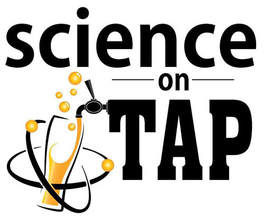
Join Cool Science for Science on Tap every 2nd Monday of the month [except this month- see below] at Jack Quinn’s Irish Pub & Restaurant in downtown Colorado Springs. Presenters begin at 6:30 pm and typically speak for 60-90 minutes including Q&A, with food and drink available beginning at 6:00 pm. A wide variety of fascinating topics are presented by local scientists for informal discussion, and the relaxed atmosphere encourages anyone and everyone to come explore the latest ideas in science and technology. From practical to theoretical, the presentations and group interactions provide a fun and interesting way to gain an understanding of the world around us.
Join Cool Science for Science on Tap every 2nd Monday of the month [except this month- see below] at Jack Quinn’s Irish Pub & Restaurant in downtown Colorado Springs. Presenters begin at 6:30 pm and typically speak for 60-90 minutes including Q&A, with food and drink available beginning at 6:00 pm. A wide variety of fascinating topics are presented by local scientists for informal discussion, and the relaxed atmosphere encourages anyone and everyone to come explore the latest ideas in science and technology. From practical to theoretical, the presentations and group interactions provide a fun and interesting way to gain an understanding of the world around us.
Next up: Monday, July 8, 2024 at 6:30 pm
Hybridization of Commercial and Residential Power
David Shnaper, Colorado Solar Innovations
Summary: We'll discuss the hybridization of commercial and residential power. How does it work, who does it serve, and why it is so beneficial to the average person and NECESSARY to assist the grid in providing power throughout the state of Colorado.
David Shnaper is the Chief Operating Officer of Colorado Solar Innovations, a U.S. Army Veteran, and former Project Manager for Construction. He moved into this field with his brothers to help bring affordable renewable energy to all.









